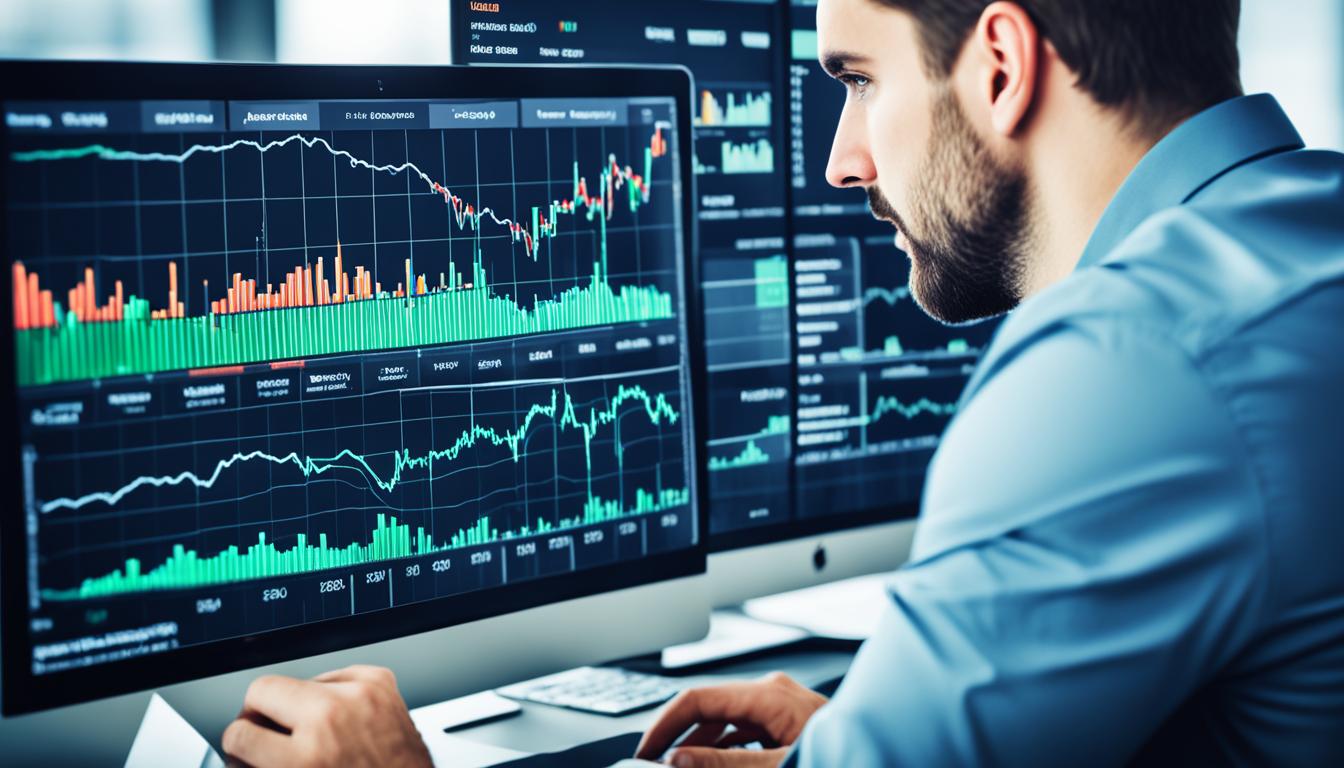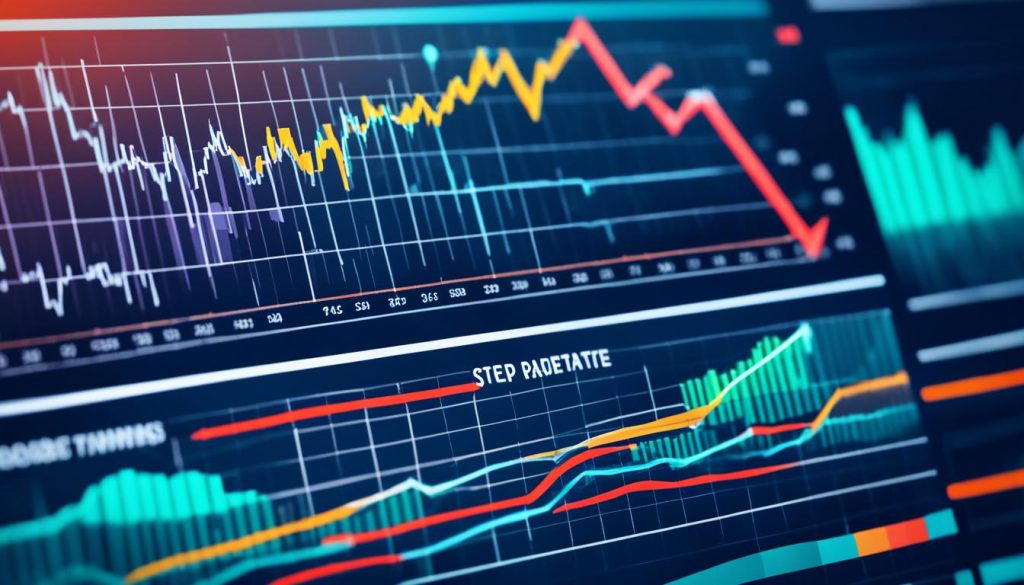Understanding arbitrage is key to using financial market opportunities. Using good arbitrage analysis helps investors make money from market flaws. Many studies highlight how important arbitrage is for smart investing. It lets investors make choices that help them reach their money goals.
Key Takeaways
- Arbitrage analysis is essential for identifying financial market opportunities.
- Exploiting market inefficiencies can lead to significant investment profits.
- Recognizing the role of arbitrage bolsters an effective investment strategy.
- Various analytical studies emphasize the importance of understanding arbitrage.
- Investors using arbitrage can make more informed financial decisions.
An Introduction to Arbitrage Analysis
Arbitrage analysis is key in the financial world. It uses price differences across various platforms. This gives traders a chance to profit from market inefficiencies.
Defining Arbitrage
Arbitrage means buying and selling an asset at the same time. This is to profit from different prices in different markets. It helps to reduce market inefficiencies. This leads to better market liquidity and efficiency.
History of Arbitrage in Trading
Arbitrage has a long history, starting in the 18th century. Traders would take advantage of currency value differences. With new trading strategies and technology, arbitrage has grown.
Experts like Eugene Fama have made big contributions with theories like the Efficient Market Hypothesis. These ideas stress the need for fast action and smart tools in arbitrage.
Now, arbitrage relies on complex algorithms and quick data analysis. This lets traders quickly spot and use market inefficiencies. As trading strategies evolve, arbitrage remains a key area in trading. It opens many doors for those skilled in it.
| Aspect | Historical Insight | Modern Implications |
|---|---|---|
| Technological Evolution | Manual and Telegraph-Based Trading | Algorithmic Trading and Real-Time Data |
| Legal Framework | Minimal Regulation | Regulatory Compliance and Transparency |
| Speed of Execution | Days to Weeks | Milliseconds |
Understanding Price Discrepancies
In financial markets, price differences happen because of various reasons. Smart investors use these differences to make money. This part explains why these differences happen, with examples from different markets.
Key Factors Leading to Price Discrepancies
Price differences can come from many places and affect all investors. One main reason is how fast traders get market info. If some traders get updates instantly while others don’t, prices can vary for a short time.
The ease of trading matters too. In active markets, buying and selling happen fast, keeping prices close together. But in less active markets, prices can differ more. Also, when exchanges update prices at different times, it leads to short-term differences. This is something experts try to use to their advantage.
Examples of Price Discrepancies in Different Markets
Different markets show us how these price differences appear. In stocks, prices might change between the close of one market and the open of another. This happens because of new information or trading in different countries.
With commodities like oil, differences can happen because of delivery times or quality ratings. For example, Brent and WTI crude prices can differ, offering a chance for traders to make a profit.
| Market | Typical Discrepancies | Factors Involved |
|---|---|---|
| Stock Market | Opening and Closing Prices | Time Zones, Latest News |
| Commodities | Different Exchanges | Quality Assessments, Delivery Delays |
| Foreign Exchange | Currency Pair Pricing | Market Liquidity, Economic Data |
By learning and analyzing these reasons with quantitative methods, investors can spot and use these price differences to their benefit.
Effective Trading Strategies for Arbitrage
It’s key to grasp the subtleties of trading tactics for winning in arbitrage. This part explores various techniques traders use, aiming to cut risks and boost the results of their investment approaches. Through these methods, traders can effectively exploit market chances.
Types of Arbitrage Strategies
Traders have several arbitrage techniques at their disposal, each bringing its own set of advantages:
- Spatial Arbitrage: This is about using the price differences of the same asset across various markets or places.
- Statistical Arbitrage: Here, traders apply quantitative models to pinpoint price gaps using statistical forecasts and chances.
- Triangular Arbitrage: This method is found in the forex markets, where traders aim to gain from the rate differences between three currencies.
Implementing Arbitrage Strategies
Putting these trading strategies into action requires smart planning and managing risks. Here’s what traders need to consider:
- Market Analysis: Keeping a continuous check on market conditions and spotting price differences is crucial for triumph.
- Technology Utilization: Using cutting-edge trading platforms and algorithms lets traders make quick trades.
- Risk Management: It’s important to have solid risk control measures to tackle potential problems, like market instability and liquidity issues.
To implement a winning investment tactic, balance potential rewards against possible dangers. Using these arbitrage trading strategies, boosted by modern tech and deep market study, can greatly enhance trading results. Adopting these techniques leads to a balanced, methodical way to leverage market inefficiencies.
| Arbitrage Strategy | Description | Risk Management |
|---|---|---|
| Spatial Arbitrage | Capitalizes on price differences across locations | Monitor cross-market parity |
| Statistical Arbitrage | Uses advanced statistical models | Regular model validation |
| Triangular Arbitrage | Focuses on currency exchange discrepancies | Maintain accurate exchange rates |
Advanced Quantitative Analysis Techniques
In arbitrage trading, using advanced quantitative analysis techniques is vital. These methods help traders spot profitable chances. They provide a strong base for well-informed decisions, thanks to precise, methodical approaches.
Mathematical Models in Arbitrage
Mathematical models are key in arbitrage trading. They use complex algorithms and stats to find price differences in markets. For example, stochastic models use past data to forecast market trends. Regression models find links between various financial products.
Tools for Quantitative Analysis
Using the latest tools for quantitative analysis gives traders an edge. They use MATLAB, Python libraries, and R programming for strategy development and tests. These tools help run powerful algorithmic trading systems. They can quickly analyze huge amounts of market data.
| Tool | Primary Function | Advantages | Usage Scenario |
|---|---|---|---|
| MATLAB | Numerical computing | High precision calculations, extensive libraries | Developing complex models |
| Python (pandas, NumPy) | Data manipulation and analysis | Flexible, large community support | Backtesting trading algorithms |
| R | Statistical computing | Robust statistical analysis, detailed plotting | Predictive modeling |
The Role of Algorithmic Trading in Arbitrage
Algorithmic trading has changed how traders do arbitrage. It lets them follow complex strategies with less need for people. This is really effective for quick trades across different places to catch price differences.
Introduction to Algorithmic Trading
Algorithmic trading uses computer programs for trading. These systems look at data to time trades just right. This ensures quick use of arbitrage chances. Using smart algorithms, traders get more done, more accurately, than by hand.
Developing and Testing Algorithms
To make good algorithms, you need to know trading and how to manage risks. First, you create algorithms to spot arbitrage from market signals. Then, you test these algorithms with old data. This tells you how they might do out there in the market. It’s key to making them better and safer before real trading.
Adding advanced algorithms to trading makes handling risks better. It also raises profits by making trades fast and right. With new technology in finance tools, the future of arbitrage is all about these algorithms.
| Aspect | Manual Trading | Algorithmic Trading |
|---|---|---|
| Speed | Slower execution | High-frequency execution |
| Accuracy | Prone to human error | Minimized errors |
| Scalability | Limited by human capacity | Highly scalable |
| Risk Management | Reactive approach | Proactive and automated |
Risk Management in Arbitrage Trading
For arbitrage traders, managing risk is key. They must tackle market complexities well. This helps them spot and grab good deals. We’ll look into the risks of arbitrage trading and how to deal with them.
Identifying Potential Risks
- Execution Risks: Delays or failures in orders can erase profits due to market changes.
- Counterparty Risks: If the other party fails to fulfill their end, your money could be at risk.
- Liquidity Risks: In markets that aren’t very active, it might be hard to trade without affecting prices, which can hurt profits.
Mitigation Strategies
To lower these risks, traders use certain strategies. Let’s discuss some of the best ones.
- Diversification: By investing in different assets and places, you limit the risk tied to one source.
- Real-Time Monitoring: Watching the markets closely helps you act fast and make smart trades.
- Automated Risk Controls: Using technology, you can set limits and automatically react to market shifts, protecting your money.
Conclusion
Arbitrage analysis shows many ways to make money in the financial markets. It uses differences in prices for profit. We covered how arbitrage has grown and changed, looking at basic ideas and complex methods.
Knowing how to spot and use price differences can greatly improve trading. Using computerized trading and strong risk management helps. This approach keeps investments safe while making money.
To do well in arbitrage, you must keep learning and changing your methods. As markets and tech change, your strategies should too. Staying up to date and using new methods can greatly improve your trading success.
FAQ
What is arbitrage analysis and why is it important?
Arbitrage analysis is buying and selling an asset at the same time to profit from price differences. It’s essential for finding financial market chances, allowing traders to gain from market flaws. It’s a key part of smart trading and making investment choices.
What are the primary factors leading to price discrepancies in financial markets?
Main factors are different market information levels, liquidity variances, and price update delays. Regulatory and technological differences also cause price discrepancies.
Can you provide examples of price discrepancies in different markets?
Sure! Price differences can be seen in stocks on various exchanges, commodities prices by region, and forex rates in different places. These show how traders make money from market inefficiencies.
What are some effective arbitrage trading strategies?
There are strategies like spatial arbitrage for price differences in locations; statistical arbitrage, using data to predict prices; and triangular arbitrage, exploiting currency discrepancies. Each needs a special approach and risk handling.
What are the key risks involved in arbitrage trading and how can they be mitigated?
Trading risks include execution, counterparty, and liquidity risks. To lower risks, diversify, monitor in real-time, use automated controls, and do thorough quantitative analysis.
How does algorithmic trading enhance arbitrage opportunities?
Algorithmic trading uses computers for fast trades, taking advantage of quick price changes. It requires creating and improving algorithms for precise and efficient trades, reducing mistakes and boosting chances.
What mathematical models and tools are used in quantitative analysis for arbitrage?
Quantitative analysis uses models like stochastic processes and time series analysis. Financial software and proprietary algorithms are crucial for finding good arbitrage situations and making timely trades.






